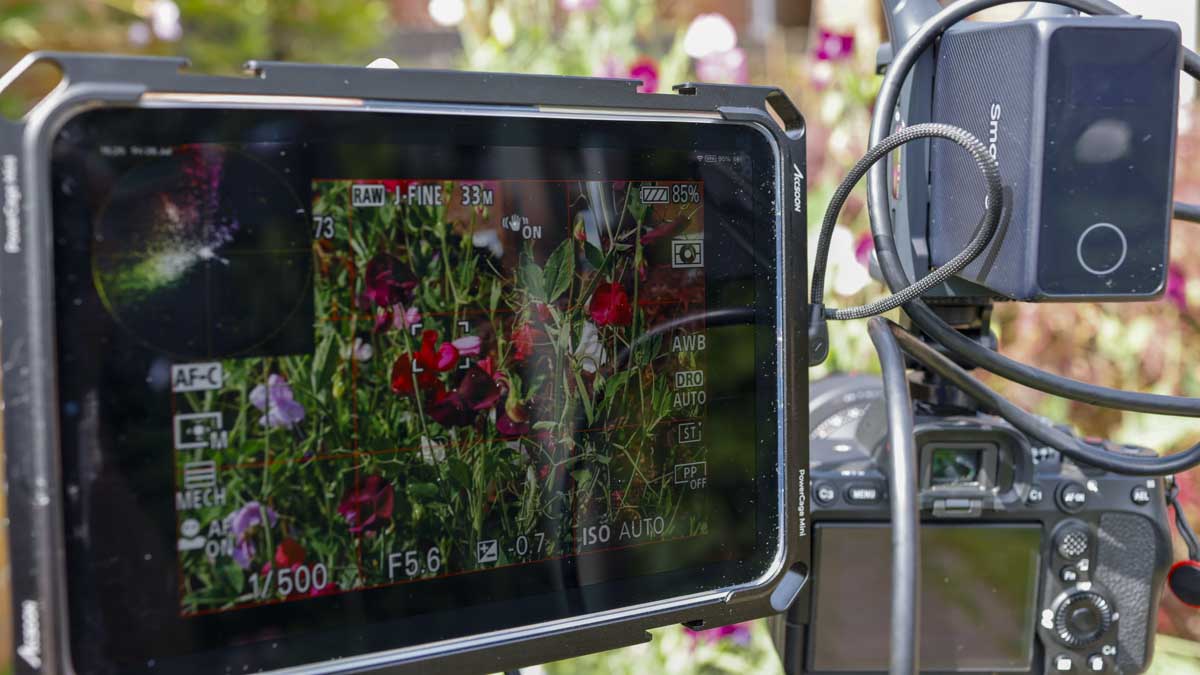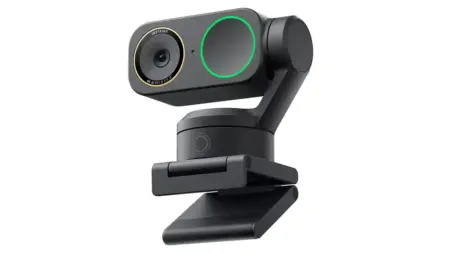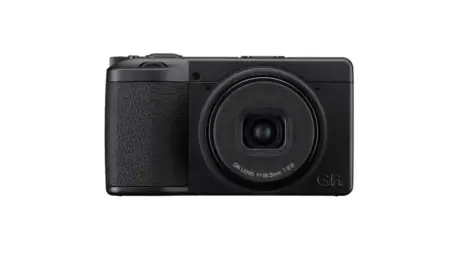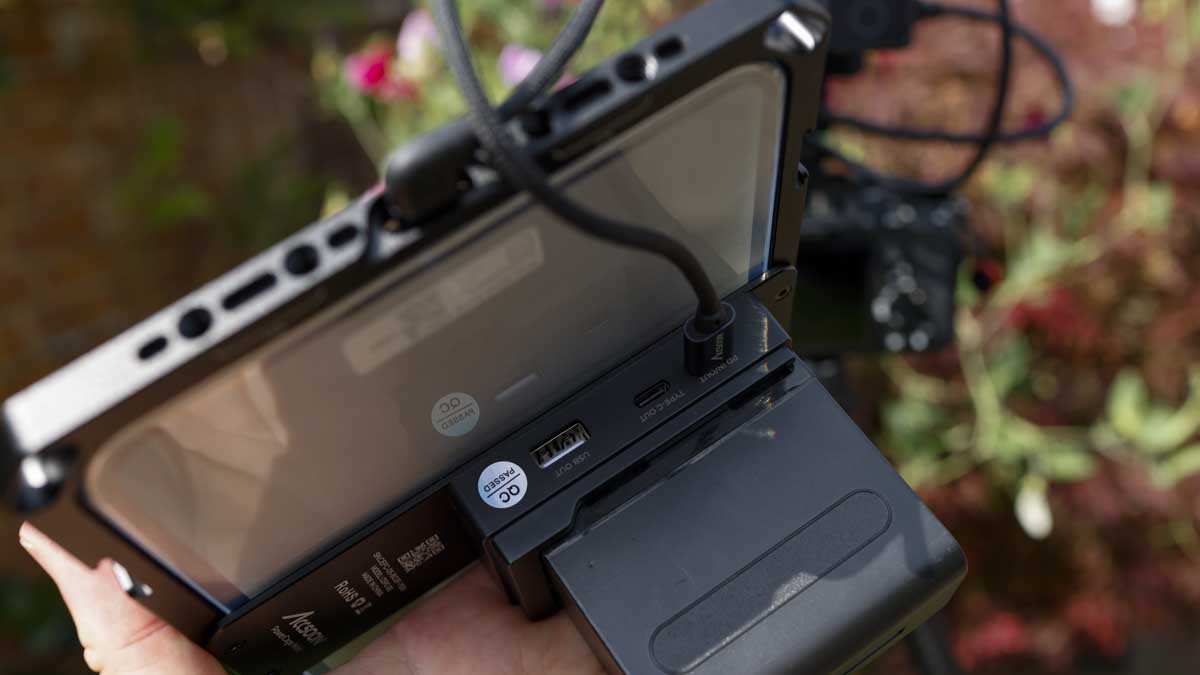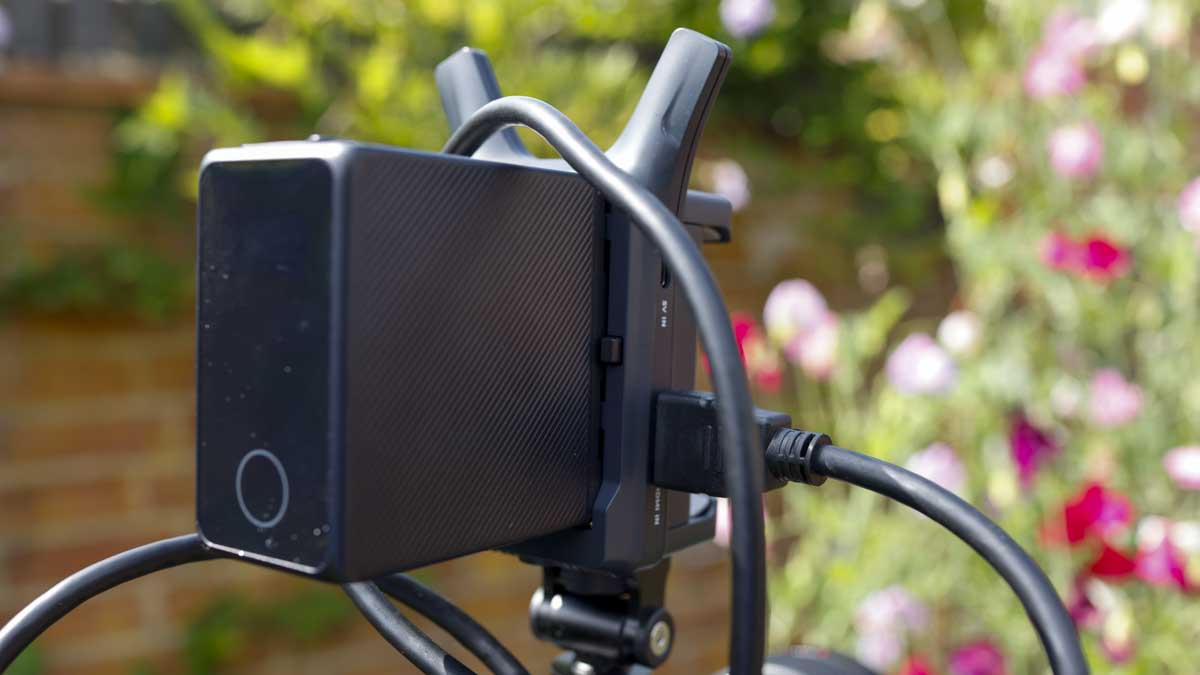One of the things that really stands out about the CineView Nano is its simplicity of use. It takes roughly 2 minutes to set up, and once the app is loaded, you can connect to the Wi-Fi network using your device’s settings, then go back to the app, and everything should be working seamlessly. There is very little to learn or tweak when it comes to setting up the CineView Nano—it’s designed as a true plug-and-play device.
Once the transmission is working, it’s simply a case of using your smartphone as a compact monitor. Whether you’re filming from difficult angles or in positions where it’s hard to see your camera’s small monitor, having your smartphone’s bright, high-quality screen is a huge advantage. The ability to take reference shots while you go along using the record feature is also a great asset.
In testing, I found that I could not only use the footage on my smartphone but, when running a workshop, project the view directly from the camera onto another device, such as an iPad. This allowed others to view what was being shot, also making it incredibly helpful when working on set or in collaborative environments. The advanced multi-transmission feature is ideal for small productions where multiple people may need to view the footage simultaneously.
For run-and-gun videography, the ability to mount your phone onto the camera as a film monitor is invaluable. The larger screen allows for better composition and provides a more accurate view of what you’re shooting especially with the overlays. Additionally, being able to switch to an iPad or other device to check the quality of your shot adds another level of usability.
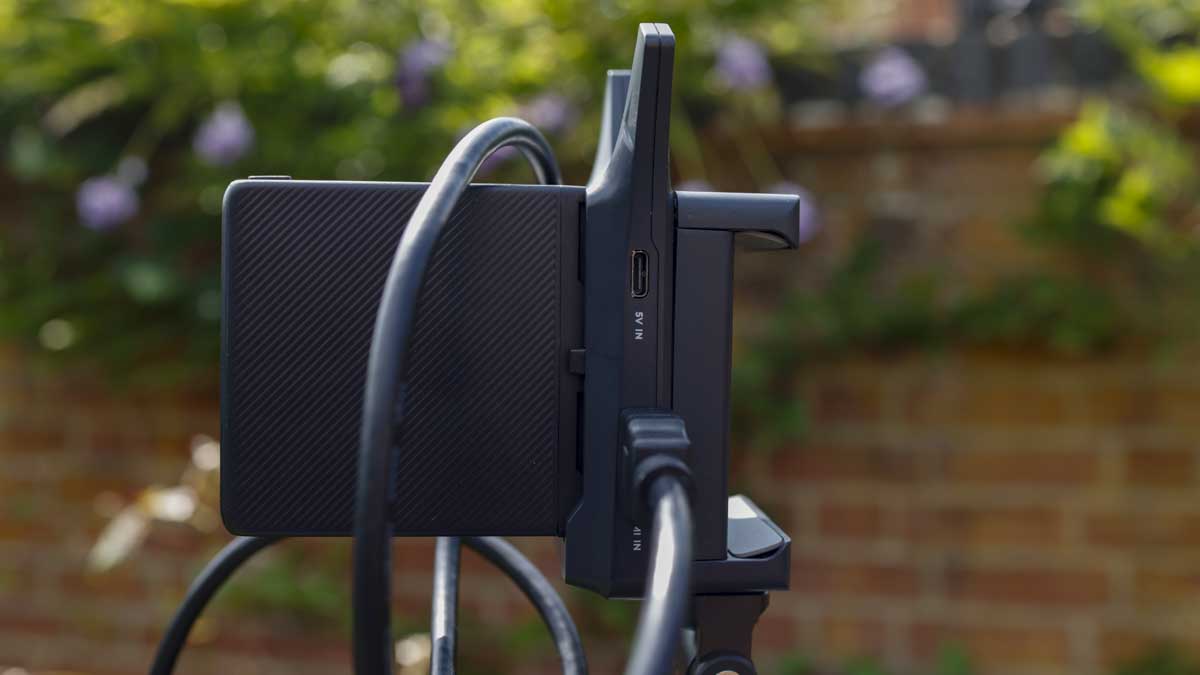
One of the features I really enjoyed, similar to the Atmos Ninja 5, was the ability to use video overlays. For example, a simple tap on the focus peaking option ensures your shots are correctly focused, with red peaking highlights showing what is sharp in the scene. Likewise, options such as false colour and zebras allow you to make sure that your highlights aren’t blown out and that your colours are balanced and correct.
Essentially, the CineView Nano turns your mobile device into a highly effective field monitor. With the iPhone 15 Pro and iPad Mini’s exceptionally good screen resolution, the quality of the video image reproduction appears equivalent to that of the Atomos monitors I typically use, with the added convenience of wireless transmission instead of being tethered by cables.
While the CineView Nano’s quality of transmission is generally excellent, there were a few occasions when the screen glitched as objects separated the clear video between the smart device and the transmitter, although these moments were generally fleeting. You could also occasionally see a slightly extended delay in the footage, although again, this was fleeting and really, considering what this device enables, it’s not an issue.
However, there is one obvious downside of the wireless connection over a wired one: while you can record video on the device using the CineView Nano, it is restricted to 1080p60. In comparison, the Atomos Ninja 5 offers a wide range of formats and quality options. So, the footage recorded via the Nano is mostly suited for social media rather than for final production work. Still, it’s a nice feature to have.
What I also appreciated was the ability to use the Atomos Ninja and the CineView Nano side-by-side. I could send the video to the Atomos Ninja for high-quality recording and, at the same time, use the CineView Nano to transmit footage wirelessly to an iPad so my colleague could monitor the shots. This came in handy when a camera was mounted on a DJI RS4, allowing us to check the shots wirelessly without having to inspect the camera for exposure or focus manually.
Overall, considering the price, the CineView Nano is an extremely useful wireless transmission system. Those shooting solo will find it incredibly beneficial just to have that larger screen for proper footage monitoring. When working with a team, you can transmit from one camera to up to four connected devices, allowing the entire team to see what’s being filmed in real-time. If you’re working with a social media person, they can even quickly edit down the footage on the spot and get it out to a wider audience.
The CineView Nano takes things a step further with features normally reserved for larger, more expensive film monitors. These enable you to get all the necessary video overlays to ensure the quality of your footage. There are some limitations, such as the device not being able to record in higher resolutions. However, it’s still extremely beneficial, especially for those working solo or in the field.
